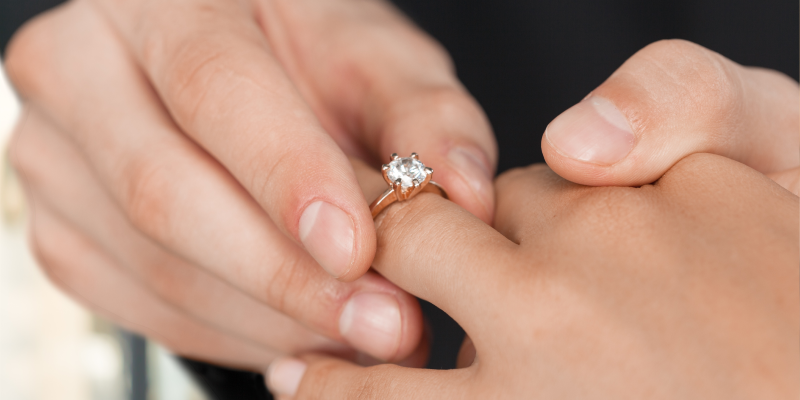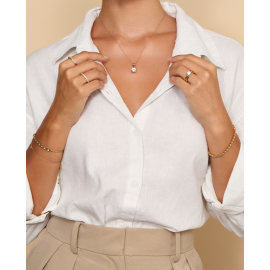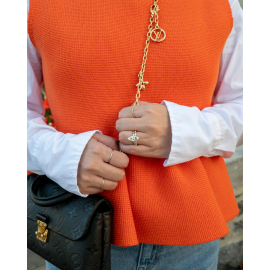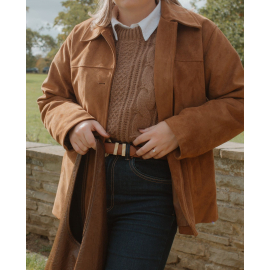Price match guarantee

We’ve teamed up with Klarna to provide flexible payment options, allowing you to shop the way you want. With Klarna, you can split your payment into 3 instalments or choose to pay later, making your shopping experience smoother and more convenient. Your order total must be between £100 and £499 to qualify.

We’ve teamed up with Klarna to provide flexible payment options, allowing you to shop the way you want. With Klarna, you can split your payment into 3 instalments or choose to pay later, making your shopping experience smoother and more convenient. Your order total must be between £100 and £499 to qualify.

October 07, 2020 | by Admin
It is law within the UK that every item of precious metal sold such as Platinum, Gold, Silver is stamped labelling the item with the type of metal it is. Platinum pieces which weigh less than 0.5 grams, 18ct Gold and Palladium pieces weighing less than 1.0 gram and Silver pieces weighing less than 7.78 grams are except from hallmark.
At Diamonds Factory all our products are hallmarked as per UK hallmarking law from London Assay Office (The GoldSmith Company)
The Goldsmiths' Company Assay Office is the oldest assay office in the United Kingdom. It has provided hallmarking services since The Goldsmiths' Company was founded in the 1300s. The company received its royal charter in 1327 and ranks 5th in order of precedence of the 12 Great Livery Companies of the City of London.
Hallmarking dates back to the 1300s when Edward I of England passed a law requiring any item made of silver, which was offered for sale, to be at least of equal quality as that of the coin of the realm (silver currency). The wardens of The Goldsmiths' Company were tasked with visiting workshops in the City of London to assay (test) silver articles. If these articles were found to be below standard they were originally destroyed and the metal forfeited to the King. If they passed, each article received the King's mark of authentication - the mark of a leopard's head. By 1478, there were several hundred workshops and merchants manufacturing silver articles in the City of London. It was not possible for the wardens to visit them all so the merchants were ordered to bring their items to Goldsmiths' Hall for testing and marking and a permanent Assay Office was established in the building. This is the origin of the term hallmark - struck with the King's mark at Goldsmiths' Hall.
In 1544 the Goldsmith's Company adopted the King's mark as their town mark and the mark of the leopard's head is now internationally recognised as the mark of this assay office.
The Goldsmiths's Company Assay Office is still based at Goldsmiths's Hall and remains the oldest company in Britain to be continually trading from the same site. However, it also has two satellite offices; at Greville Street in Hatton Garden in the heart of the London jewellery quarter and within a high security complex near London's Heathrow airport. It now has a new off-site facility within the Dalston-based jewellery manufacturer, Allied Gold. This is the first time in the Assay Office's 700 year history that it has opened permanent hallmarking services on a customer's premises.
In addition to hallmarking, the office has now expanded its range of services to support the jewellery trade and enforcement authorities. It offers a variety of specialist analytical services including nickel, lead & cadmium testing, antique silver dating, non-destructive compositional analysis, plating thickness measurement and a melt and assay service for scrap precious metal carried out in their fully independent on-site laboratory. Other services offered are a jewellery valuation service, laser marking, trading standards assistance, high quality photography and a comprehensive range of training and educational seminars, lectures and specialist events.






Have you found the perfect ring but concerned it won't fit on your special day? Whether you are in the market for an engagement ring or a wedding band, there are numerous ways to find your ring size (or your partner’s). Of course, finding someone else's ring size, particularly for a surprise proposal, can be somewhat trickier. Here we discuss everything you need to know in our engagement ring and wedding ring resizing guide.
How to find your partner's ring size
If you are thinking of popping the question to that special someone or you are buying their wedding ring for them, finding their ring size can feel tricky. Here are a few great ways to find their size ahead of time:
Ask them! - This may seem obvious but asking your partner for their ring size is acceptable, even more so if you have discussed getting engaged before. You could even ask the question discreetly, for example, if you are passing a jewellery store so that you do not give away the surprise.
Ask their friends or relatives - One of your partner’s friends or relatives may know your loved one’s ring size. Ask around and see if you can get some information.
"Borrow" their jewellery - If your partner likes to wear rings already, you are probably in luck. "Borrow" a ring (ideally one they wear on the ring finger of their left hand) and take it to a store where they can help find the size.
It is better to get an approximate ring size rather than buy one that is far too big or small as it makes the resizing process simpler. We offer a free ring sizer tool that you can order and plenty more information in our ring size education guide.
How should your engagement ring and wedding rings fit?
Like all rings, your engagement ring and wedding rings should fit comfortably. They should slide on easy, but there should be enough resistance so that they don’t slide off your hand. You can check whether your rings are a good fit by sliding them on and off. If they take a couple of seconds and slight pressure to slide over your knuckle but do not get stuck or need a lot of force to remove, then they are a good fit. It shouldn’t take a lot of effort to remove your rings and, as you will most likely wear them all the time, there needs to be enough room for when your fingers get too hot or cold.
How are rings resized?
There are a variety of methods jewellers used to resize rings. Typically, to resize a ring that is too large, a jeweller will remove a small section of the shank and then reattach the ends with solder before cleaning and polishing it back to pristine condition. A ring that is too small is harder to resize but is typically done by cutting the shank of the ring and inserting a small amount of metal between the two cut ends to make the circumference larger.
How long does it take to get rings resized?
It can take a few weeks to get rings resized. It depends on the jeweller or company you choose to go to, the complexity of the work required and their schedule or workload.
How much is it to resize rings?
If you have purchased a ring from us, we offer a 30-day free ring resizing for most styles if they are in an unworn condition. It includes resizing for up to two sizes up or down. There are additional charges for rings that need resizing more than two sizes either way. For this reason, it is a good idea to get the ring size as accurate as possible before placing an order with us. For more information about the costs involved to resize your ring, you can contact our customer care team.
Can all engagement rings and wedding rings be resized?
We can resize most engagement rings and wedding rings, although there are a few exceptions. For example, if there is a big difference between the ring size you have and the ring size you need, it may be impossible to resize. Unfortunately, we also cannot resize engraved rings or rings created using our bespoke jewellery service, due to the nature of the design. So, if you are buying a bespoke jewellery design or looking to get your ring engraved, you should get accurately measured in a store.
Discover our selection of diamond rings, perfect for any milestone, or head to our other article to find out how to clean diamond rings at home.